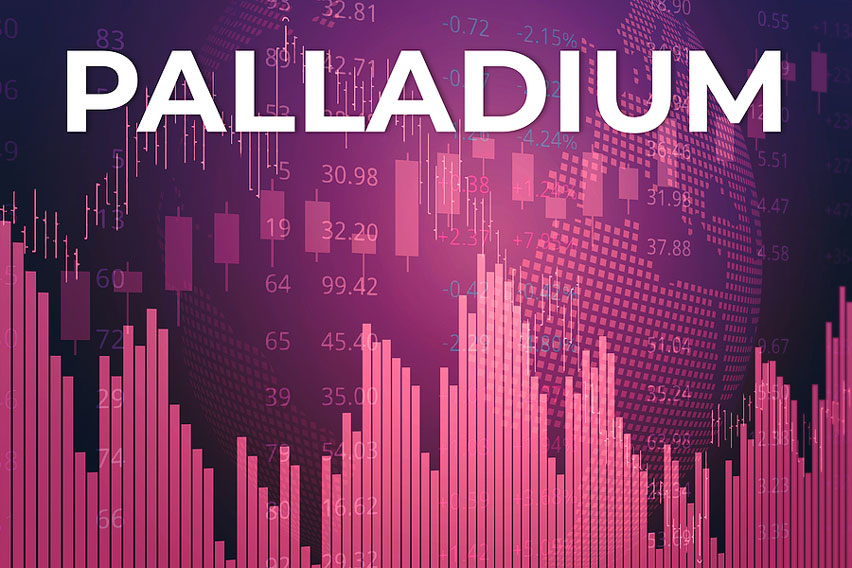 Palladium prices have earned a reputation for high volatility, especially when compared to the price action of other precious metals such as gold or silver. These significant price swings give some investors pause when considering investing in what’s commonly known as white gold. In reality, the ebbs and flows of palladium shouldn’t scare you away from further portfolio diversification. Instead, it’s important to understand what makes prices unstable so you can make informed investment decisions.
Palladium prices have earned a reputation for high volatility, especially when compared to the price action of other precious metals such as gold or silver. These significant price swings give some investors pause when considering investing in what’s commonly known as white gold. In reality, the ebbs and flows of palladium shouldn’t scare you away from further portfolio diversification. Instead, it’s important to understand what makes prices unstable so you can make informed investment decisions.
Shorter history
Palladium is a relatively new metal, especially compared to the rich history of gold. Palladium was only discovered in 1803 and didn’t really see high demand until the automotive sector took off in the 20th century. With a significantly shorter history, this shiny metal doesn’t carry the same level of trust among investors as other precious metals. Many people remain skeptical of the palladium’s ability to provide sufficient security and stability during periods of economic uncertainty. This lack of confidence results in sensitive palladium prices which can jump or dump based on the smallest trading movements or relevant news stories.
👉 Related reading: Gold vs Palladium: Investing Considerations
Limited supply
The earth’s supply of palladium is concentrated in a small handful of countries, with Russia and South Africa holding the majority of underground reserves. In fact, these two nations accounted for 80% of palladium production in 2022. This severely restricted availability places tremendous pressure on palladium prices which can be significantly influenced by natural disasters, political instability, labor interruptions, and geopolitical clashes – all of which fall outside the control of the US and the international community. The implications of these isolated supplies of palladium are underscored amid rising tensions with Russia. The US International Trade Commission went as far as to say palladium is “critical to the U.S. economy and national security”.
Smaller market
Palladium’s recent discovery coupled with its limited supply contributes to the metal’s relatively small market. To put things into perspective, the gold market is estimated at $5 trillion while the palladium market is projected to top out at $24 billion in 2023. One of the most pronounced side effects of a constrained market is price instability resulting from limited trading activity and low liquidity. It doesn’t take large buying or selling orders to influence palladium prices when compared to larger precious metals markets. There are simply fewer traders available to absorb the impact of these transactions, amplifying price fluctuations.
Automotive dependence
Another contributing factor to the roller coaster of palladium prices is the market’s enormous dependency on the automotive industry. More than 80% of the world’s palladium supply is eaten up by the automotive sector alone, primarily for use in catalytic converters. The metal’s unique ability to transform dangerous pollutants into less harmful emissions makes it an ideal candidate for exhaust systems. The disproportionate influence of a single sector results in dramatic price changes as demand ebbs and flows based on environmental policies, vehicle purchases, and EV progress.
Unpredictable demand
Unlike the gold market where purchases are consistent and expected, the demand for palladium is fairly unpredictable. The automotive industry’s near monopoly on palladium demand creates unbalanced buying pressure. For example, palladium purchases boomed when car manufacturers ramped up their use of catalytic converters in response to the push toward decarbonization. This skyrocketed palladium prices beyond the value of gold seemingly overnight. However, it didn’t take long for those gains to reverse with the advent of electric vehicles which don’t require catalytic converters. It’s difficult for palladium prices to find sure footing with so much unpredictable demand.
Speculative trading
The palladium market’s propensity for high volatility attracts speculative traders looking for outsized returns based on short-term price movements. These swing traders aim to scoop up palladium during temporary dips before selling at the height of a subsequent spike. Unfortunately, the presence of speculative trading only exacerbates the temperamental nature of palladium markets, creating a vicious cycle of increased price instability. This problem is partially allowed to run rampant due to the palladium market’s lack of institutional oversight or regulation.
Investing in Palladium Despite Volatile Prices
As mentioned before, the volatility of palladium prices doesn’t have to scare you from investing in this valuable precious metal. Investors can overcome the turbulent ups and downs through the strategy of dollar cost averaging. Instead of trying to time the market, investors can simply invest a lump sum at regular intervals to average out their base cost. In theory, this evens out the inevitable price jumps and dips.
👉 Related read: Palladium: What It Is, Why It’s Valuable, and Should You Own It?


